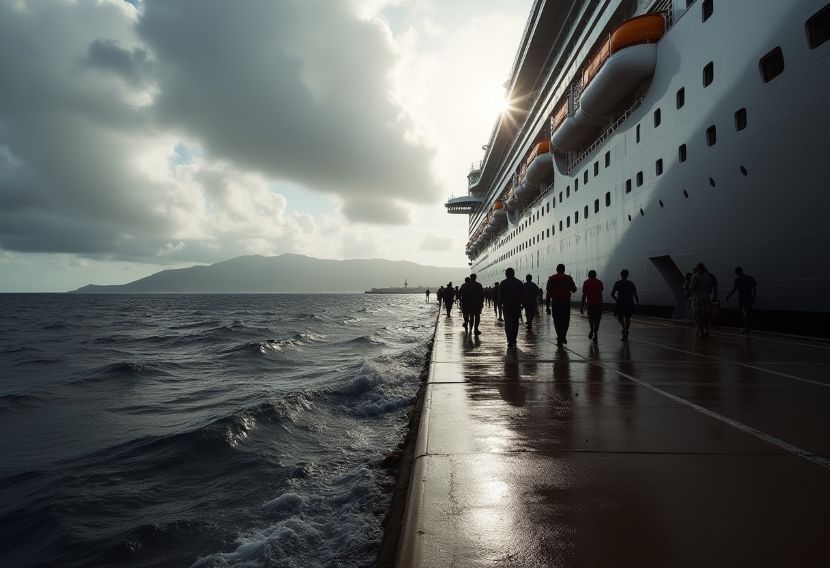Hawaii’s vibrant tourism sector faced significant turmoil following a powerful tsunami warning that prompted cruise ships to hastily evacuate island ports, leaving numerous passengers stranded in an unforeseen ordeal. This unprecedented event unfolded when an 8.8-magnitude earthquake off Eastern Russia triggered widespread alerts across the Pacific, placing Hawaii under a severe state of emergency.
The Norwegian Cruise Line’s Pride of America, which had just arrived for its scheduled stop in Hilo, was among the vessels that departed hours ahead of schedule, adhering to strict emergency protocols designed to protect its crew and guests. This swift departure, while prioritizing safety, inadvertently created a challenging situation for passengers who were ashore during the sudden change in plans.
Norwegian Cruise Line representatives stated that considerable efforts were made to contact passengers, but the reduced return window meant many could not make it back to the ship in time. Those unable to re-board were directed to a local high school, where they received essential provisions and information, while the ship maintained communication via text messages, advising those on land to seek higher ground.
Concurrently, the Oceania Regatta, docked in Kailua-Kona, also executed an early departure. Despite a smaller number of ten passengers remaining on land, the cruise line demonstrated unwavering commitment to their safe return. Both ship-based and shoreside teams worked in concert with local authorities to coordinate arrangements for these impacted individuals to rejoin their vessel.
The seismic event off the Russian coast resonated far beyond Hawaii, initiating tsunami alerts throughout the Pacific Ocean, stretching from Alaska down to South America. While many of these warnings were later downgraded to advisories, the lingering threat highlighted an unsettling reality for both residents and visitors alike, emphasizing the unpredictability of natural phenomena.
Hawaiian state officials reacted with immediate and decisive action, conducting thorough safety inspections of all affected areas, including the Hilo cruise port, which fortunately reported no casualties. Even as the direct tsunami threat diminished, authorities continued to issue cautions regarding potential flooding, strong currents, and hazardous waves, urging continued vigilance from the public.
For those passengers left behind or denied boarding, the path forward remained uncertain, underscoring the complexities of such rapid evacuations. Both Norwegian Cruise Line and Oceania Cruises affirmed their ongoing collaboration with local officials and the United States Coast Guard to ensure port safety and facilitate the safe reboarding of all affected individuals.
The long-term implications of this cruise disruption on Hawaii’s vital tourism industry are now a subject of significant concern, particularly given the potential for future natural disasters to interrupt travel schedules. This incident adds a layer of unpredictability to what is already a dynamic travel landscape, prompting a re-evaluation of emergency preparedness strategies.
Ultimately, the near-miss scenario for Hawaii and its cruise visitors serves as a stark reminder of nature’s formidable power and the critical importance of robust emergency preparedness. As cruise lines navigate the complexities of reuniting passengers with their ships, the broader tourism sector in Hawaii will be closely examining adaptable solutions to minimize future disruptions for its valued guests.






Leave a Reply